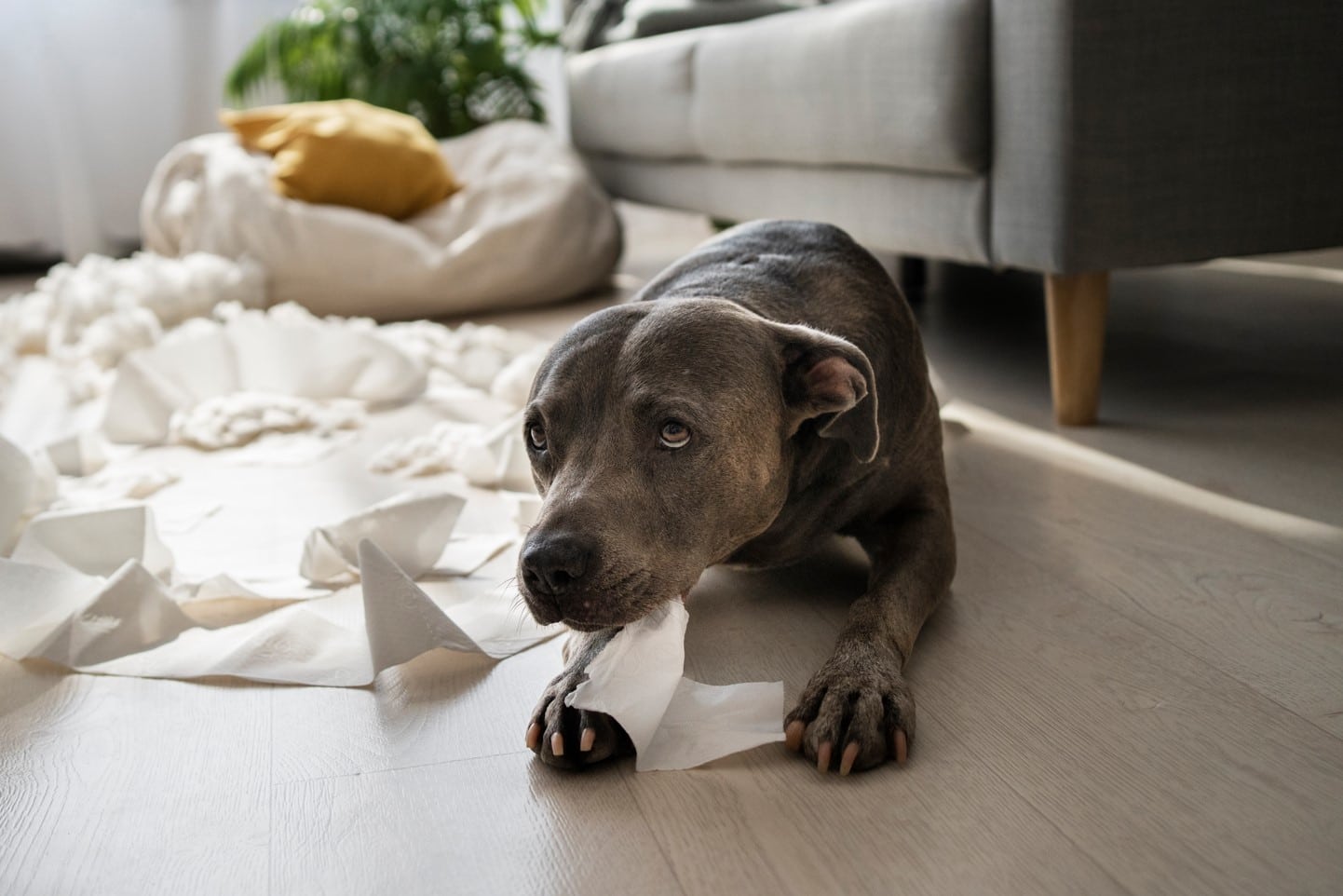

How to Help Your Dog Overcome Anxiety: Tips and Tricks
As much as we love our furry friends, dogs are not immune to experiencing anxiety. It’s not uncommon for dogs to exhibit signs of stress or fear in response to various stimuli such as loud noises, separation from their owners, or changes in routine. If you notice your dog is being stressed, nervous, or displays signs of anxiety, it’s essential to take action and help them overcome it. In this blog post, we’ll discuss some tips and tricks on how to fight anxiety in dogs.

What are some of the most common signs of anxiety in dogs?
Anxiety in dogs can manifest itself in a variety of ways, including behavioral changes, physical symptoms, and changes in appetite or energy levels.
Some common signs of anxiety in dogs include:
- Pacing
- Excessive panting
- Shaking or trembling
- Avoidance or hiding
- Destructive chewing or scratching
- Restlessness or hyperactivity
Other signs may include:
- Decreased appetite
- Digestive issues such as diarrhea or vomiting
- Changes in sleep patterns
- Your dog might be even experiencing a panic attack, every once in a while
It is important to pay attention to these signs and seek veterinary advice if you suspect your dog may be experiencing anxiety, as there may be underlying medical conditions or other factors contributing to your dog’s behavior.
Check out our Pawzles, which can help your dog overcome anxiety:



Here are few ways to help your furry friend feel calmer and at ease

It’s crucial to create a calm and peaceful environment for your dog. Ensure that your dog has a comfortable and secure space to retreat to when they feel anxious. Make sure to avoid chaotic situations or loud noises that may trigger anxiety.
Dogs thrive on routine, and knowing what to expect can help reduce anxiety. Establish a daily routine for your dog, including regular feeding times, exercise, and playtime. This routine can help your dog feel more secure and less anxious.
Positive reinforcement training can help boost your dog’s confidence and reduce anxiety. Reward your dog for good behavior, and use treats or praise to encourage positive behavior. Avoid using punishment or scolding, which can increase anxiety and stress.
Exercise is essential for a dog’s physical and mental well-being. Regular exercise can help reduce anxiety and provide an outlet for your dog’s energy. Take your dog for walks, play fetch, or engage in other activities that they enjoy.
Mental stimulation is important for dogs, especially those with anxiety. Pawzles, interactive games, and training can help keep your dog’s mind active and engaged. Mental stimulation can also help redirect your dog’s attention away from triggers that may cause anxiety.

In conclusion, anxiety in dogs, especially puppy separation anxiety is a common issue that can be managed with proper care and attention. By creating a calm environment, providing plenty of exercise, establishing a routine, using positive reinforcement training, and providing mental stimulation, you can help your dog overcome anxiety and thrive. Remember to work with a veterinarian or professional dog trainer to develop a dogs anxiety treatment plan that’s tailored to your pup’s specific needs. Together, we can raise awareness of this important issue and help dogs live their best lives possible!




